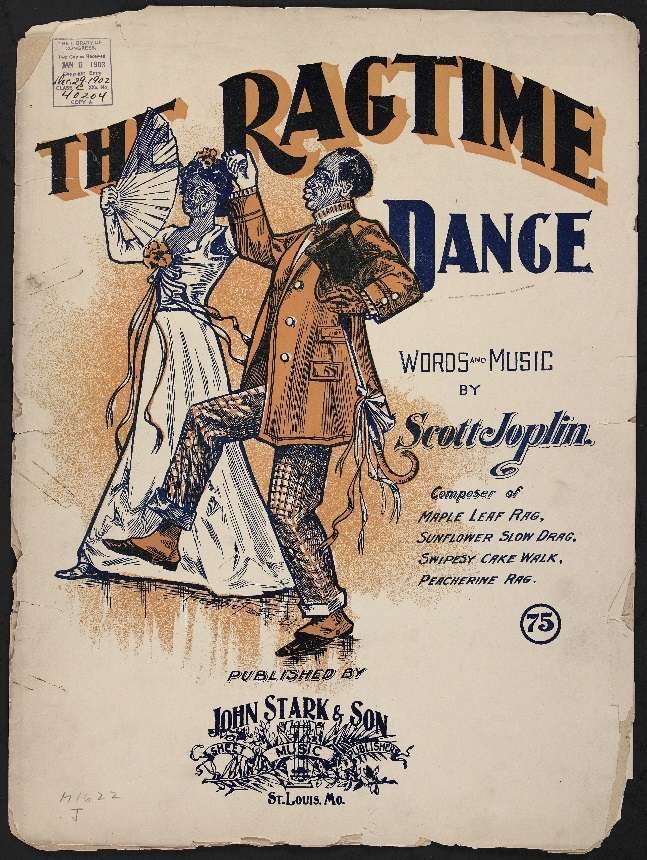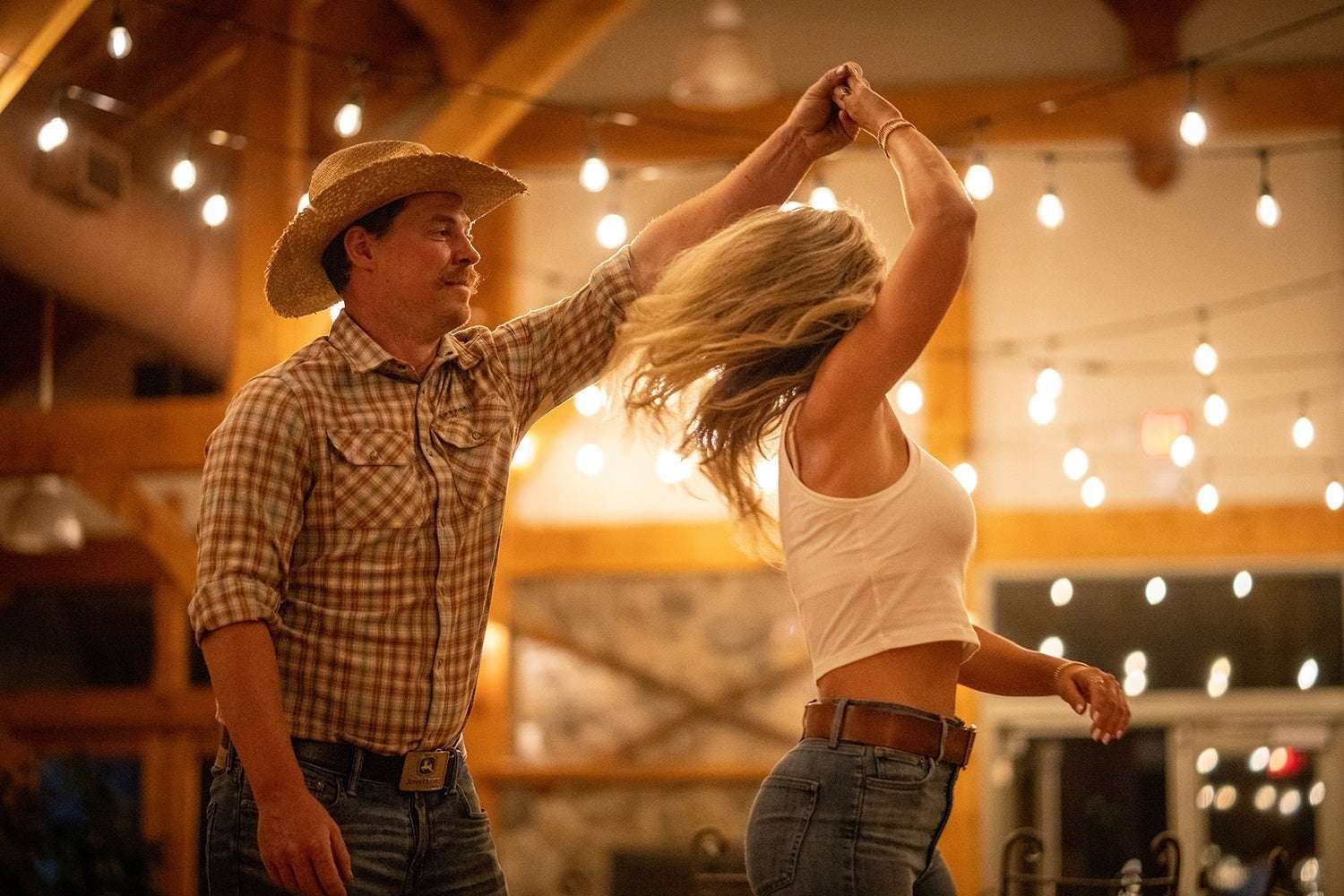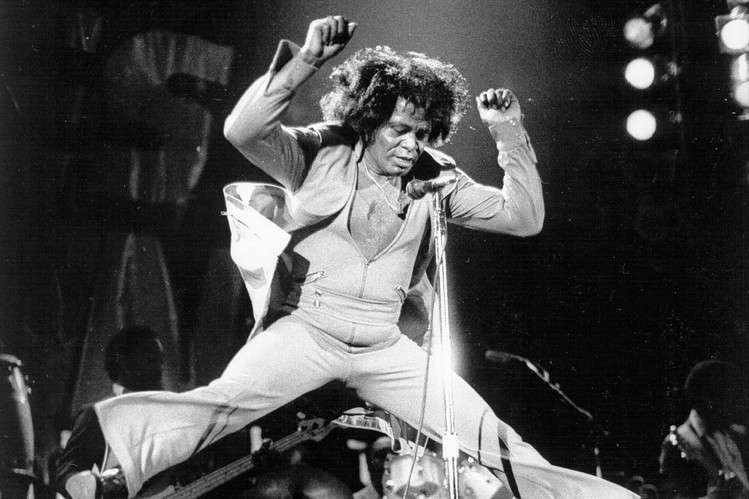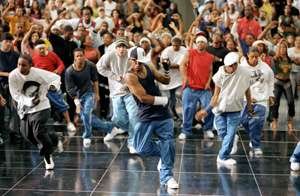Ballroom dancing changed my life and keeps my mind and body young. There is nothing quite like it. Dancing is the only activity I have found that involves the mind, body, and soul. It is mentally challenging, offers social interaction, is uplifting and inspiring, improves flexibility, provides cardiovascular exercise, good for the heart and brain.
America loves dance. Social dancing has played a major social and cultural activity since Colonial times. European immigrants brought dances to the Americas such as ballet, square dance, waltz, polka, clog stepping, and contra dance. African dances influenced popular dance in America and the Caribbean, such as mambo-salsa, cha cha, rumba, ragtime, foxtrot, swing, rock n’ roll, disco, and hip hop.
Today, a total of 62 million adults social dance in the U.S., according to the National Endowment for the Arts. Dance event participation involves 39 million who attend dance events and 5.1 million who take dance lessons. According to the Bureau of Labor Statistics, there are 681,250 professional dancers in the U.S. and 66,266 private dance studios. Dancer Magazine reports that there are 324 professional dance companies in the U.S. and there are 3,707 high school dance programs and 314 colleges offering degrees in dance
Ballroom Dancing

Ballroom dancing has been around since the 1500s in Elizabethan England. In the 20th Century ballroom dancing was popularized by Vernon and Irene Castle, Arthur Murray, and Fred Astaire & Ginger Rogers. Today the most popular ballroom style dances are the slow waltz, foxtrot, tango, Viennese waltz, and the quickstep.
Waltz – The waltz originated in Bohemia and Bavaria and spread to Vienna and Paris. It reached England in 1791 and became fashionable in the Regency Era. Waltz is a ballroom dance in closed position. The music is in 3/4 time with three-step measures. Variations are the Viennese waltz which has a fast tempo and the slow waltz. The three-step moves 1-2-3 involves left and right sway and a rise on the second beat. The waltz is often a box step with two measures (1-2-3 and 4-5-6).
Polka – Polka is a social dance from Prague that spread to Vienna and Paris and then to all of Europe in the early 19th Century. The dance features half-jump steps. The music is in 2/4 time with a fast tempo. Polish-American polka is a variation popular today.
A couple dance in a traditional ballroom closed position. It incorporates forward and back steps, side steps, hops, promenades, and turns.
Tango –emerged in Buenos Aires, Argentina in the early 20th Century and rapidly grew worldwide. Ballroom style tango is a ‘walking’ dance, or ‘stalking’, in closed position with strong staccato steps and danced to 4/4 time music with a 5 step basic. It includes turns, promenade, open fans, right-side fans, cortes, shadow rocks, goncho flicks, ochos, and other steps.
Waltz Dance
[embedyt] https://www.youtube.com/watch?v=Ve82-LCzXFI[/embedyt]
Ragtime Era

Ragtime was a form of African-American music popularized by Scott Joplin between 1895 and 1919. Ragtime influenced New Orleans and Harlem jazz.
Ragtime and ballroom dances were popularized by Vernon and Irene Castle. The Castles were a popular dance couple on Broadway, vaudeville, and silent movies. They are credited with reviving ballroom dancing from 1911 to 1917. They popularized the tango and foxtrot.

Irene and Vernon Castle
Turkey Trot – a 1900 fact tempo dance with fast trotting steps and sideway hopping steps.
Cake Walk – originated by African American slaves making fun of and mimicking the pompous snobbery of the plantation owners. It became popular with ragtime music.
Grizzly Bear – popularized by Fanny Brice on Broadway in 1910. The dance is fast with hopping steps.
Foxtrot – the foxtrot replaced the turkey trot dance around 1914. It is similar to the waltz but danced to 4/4 time in closed position with a slow (2 beats) quick (1 beat) quick in a box formation in two 4-beat measures. It uses sway, promenade, turns, change of position, forward and backward, side to side, and other moves.

Arthur Murray Dance Studio advertisement, 1922
Jazz Age

The 1920s Jazz Age immortalized in movies and The Great Gatsby novel by F. Scott Fitzgerald. An uninhibited age of excess and free for all as the American population drank more during U.S. Prohibition (1920 to 1933) than at any other time in history.
The Jazz Age was a period in the 1920s and 1930s in which jazz music and dance styles gained worldwide popularity. Originating in New Orleans from the African-American culture of ragtime, Dixieland, and blues, it played a significant part in wider cultural changes in this period.
Charleston Dance

The Charleston is a dance named after the city of Charleston, South Carolina. The rhythm was popularized in the U.S. by a 1923 tune called “The Charleston” by pianist James P. Johnson, which originated in the Broadway show Runnin’ Wild, and became one of the most popular hits of the decade.
The Charleston can be danced alone or with a partner, with the basic steps done in eight-count movements. Here are the basic steps:
- Begin with your palms parallel to the floor.
- Step forward with your left foot. Move your right foot forward, and tap it in front of your left.
- Step backward with your right foot. Then step backward with your left foot, and tap it behind your right.
- Repeat.
As you master the eight-count step, begin to move more freely with a bounce at every step. The Charleston was danced to 1920s jazz or ragtime music with a bouncy beat. Finally, add in some Flapper moves, flapping the arms up and down with each step.
Charleston dance
Fred Astaire and Ginger Rogers

Fred Astaire and Ginger Rogers represent the epitome of film’s romantic dancers—they are considered the greatest dance team in the history of American film, and their virtuosity and elegance is unparalleled. These two individuals became part of our national culture and tradition; they are credited with introducing the use of dance as a form of romantic intimacy.
Astaire and Rogers acted and danced together in nine RKO musical comedy films, from 1933 to 1939, and danced a total of 33 partnered dances together on screen. Fred and Ginger’s dance films caused an immediate sensation; audiences were instantly enchanted by the couple’s style, grace, and the use of dance as intimate romance.
Dance from Follow the Fleet
Swing Era

Big band swing music and dance were very popular in the 1930s and 1940s. Most dances were slow dance or foxtrot, faster dances were swing/jitterbug and Lindy Hop. People listened to music on the radio. Big ballrooms offered large dances with big name bands.
Swing music originated with African-American boogie woogie played at juke joints and rent parties from the 1870s, as well as Delta blues and 1920s New Orleans jazz.
Music and dance of the 1930s and 40s had a retro swing dance revival in the 1990s. Cable TV, CDs, and Internet access to older music and culture generated retro theme dances and parties. Swing dance clubs opened up across the country.

Big bands were the dominate form of music on records, film, and the radio in the 1930s and 1940s. Most of the music was easy listening and vocals. Dance music was a mix of slow dancing, foxtrots, and fast tempo swing/lindy hop songs.
The leading big bands were: Glenn Miller, Benny Goodman, Count Basie, Tommy Dorsey, Louis Armstrong, Artie Shaw, Duke Ellington, Chic Webb, Cab Calloway, Jimmy Lunceford, Harry James, Gene Krupa, Woody Herman, Glenn Gray, Jimmy Dorsey, and others.
Swing dancing included Lindy Hop and what we now call east coast swing, also called jitterbug or jive. Most dancing though was slow dancing and foxtrot.
East Coast Swing is danced to a 4/4 time medium fast 6-count steps. Dancers first take a three step side to side shuffle, with a quick, quick, slow rhythm, moving from side to side on the “1 and 2” counts (left start for men, right start for women), and then “3 and 4” counts in the other direction. Counts “5 and 6” involve each dancer completing a back rock and a forward replacement step. Swing dance includes the partners changing places through individual turns and couple’s turns. Jive is a simple 6-count version of swing.
Lindy Hop is a more complex 8-count dance which incorporates boogie woogie and the Charleston. It was developed at the Savoy Ballroom in Harlem. Dean Collins modified the Lindy Hop to develop the West Coast Swing which is popular today.
Whitey Lindy Hoppers “A Day at the Races”
https://youtu.be/WwKFALb6Vw8?si=nzzhAxdenOpUOXZv
Dean Collins and Jewel Mc Donnell with Andrews Sisters

Whitey’s Lindy Hoppers

Dean Collins and Jewel McGowen
Latin Dance
Latin dancing includes mambo-salsa, rumba, cha cha, merengue, bachata, cumbia, paso doble, flamenco, tango, and jive.
There was a “Mambo Craze” in the 1950s. The Mambo is Cuban dance music that developed in the 1930s and grew in popularity worldwide in the 1940s and 1950s. Leading Mambo musicians of the era were Prado Perez, Tito Puente, Tito Rodriquez, Desi Arnaz of I Love Lucy TV fame, and others. Salsa grew out of mambo in the Puerto Rican community of the Bronx, New York in the 1960s/70s and grew worldwide in popularity.

Tito Puente
Mambo/ Salsa, is danced in a 4/4 time, first involving three steps to the beats on the counts 1-2-3-4 in forward steps for the man, but backwards for the lady (this step is danced as a quick quick slow). The second half of the basic step is the mirror opposite (quick, quick, slow encompassing counts 5-6-7-8). Mambo/Salsa moves forward and backward, mimicking a swing set action, with three steps in each half of the basic. As the man goes forward the woman goes backward, as the man goes backward the woman goes forward. Dancers face each other in a closed hold position and allow their hips to release on the completion of each step—called settling—in a fluid Cuban motion.
Cha Cha is another Cuban dance that evolved from the Mambo in the 1950s and became popular worldwide. This style involves the rocking action of the Mambo steps described above, while also adding a triple step chasse in-between the front and back half of the Mamba basic, (this chasse step can be danced either via a side-together side action, or a forward or backward three step combo). Dancers will count “1 and 2 (for their rock and replacement step) and then count “3 and 4” (for the cha-cha-cha chasse). Like the Mambo, Cha Cha moves forward and backward on the rock steps and is danced in closed or open position.
Salsa Dancing from the movie Dance With Me
Country Western Dance

Country western music and dancing evolved from English, Irish, and Scottish country music and dances since American colonial times, especially in the Appalachian Region. It became what we now call Bluegrass music and clog dancing. Bluegrass was popularized by Bill Monroe, Lester Flatt, Earl Shrugs, and the Stanley Brothers in the 1940s.
Country music grew out of bluegrass music and African-American blues in the 1920s with the Carter Family, Jimmie Rogers, and Vernon Dalhart. Hank Williams sang honky-tonk in the 1940s and greatly popularized country music. Western swing emerged in the 1930s and 40s with Gene Autry, Roy Rogers, Sons of the Pioneers, and Bob Wills.
Contra dancing came from England in Colonial times and laid the basis of country western dancing. Contra dances involver two long lines, one of men, one of women, with a caller calling moves. It evolved into modern square dancing with four couples in a square with moves that include: Forward and Back, Promenade, Grand Left and Right, Do-Si-Do, Elbow Swing, and Balance.
Country two step – is a smooth dance influenced by the waltz, polka, and western swing. It is danced to 4/4 time in a three step quick-quick-slow pattern per measure.
Country two step dance
Rock ‘n’ Roll

In the 1950s, rock n’ roll emerged out of Jump Blues and country music. Jump blues was a fast tempo style of blues and boogie woogie with artists Louis Jordon, Wynonie Harris, Amos Milburn, Roy Brown, Big Joe Turner, and others.
Original rock n’ roll artists include Bill Haley, Elvis Presley, Chuck Berry, Little Richard, Buddy Holly, Fats Domino, and Jerry Lee Lewis.
Early rock dancing was mostly Swing dance variations such as East Coast Swing, Lindy Hop, Jive, Jitterbug, and Boogie Woogie. There are many examples of Swing dancing in 1950s rock n’ roll movies, including Elvis Presley and Bill Haley movies.
The American Bandstand music and dance TV show popularized rock n’ roll. The show aired from 1952 to 1989 and was hosted by Dick Clark.

American Bandstand
The Stroll: This dance became popularized on the American Bandstand TV show and involves two lines of dancers, men on one side, a space between, and with the line of women facing the men. Paired couples at the front slowly dance down the aisle between the rows of dancers.
The Hully Gully: This line dance also became popular on the American Bandstand TV show. An MC calls out moves and dancers dance back and forth patterns, including side steps, kicks, right turns, crossing feet, walking turn arounds, and hand clapping.
The Madison: Another popular line dance on the American Bandstand TV show, The Madison also involved an MC calling out moves that direct dancers into traveling patterns that utilize various steps, kicks, turns, crossovers, turn arounds, and hand claps.
Twist: The Twist was a worldwide dance craze of the late 1950s and early 1960s and was started by Chubby Checker’s number one hit The Twist. Dancers start with their feet shoulder width apart, and their arms are held out front of the body with elbows bent. The hips, torso, and legs rotate on the balls of the feet as a single unit, and to create the “twist look”, dancers’ feet grind back and forth on the floor, as if they are putting out a cigarette.

Twist
Other popular 1960s dances included Mashed Potato, Locomotion, Jerk, Frug, Watusi, and others.
Grease
James Brown

James Brown

Ann-Margret and Elvis
Disco Era

Disco became prominent in pop music and dance in the 1970s. Disco clubs emerged in all major cities, such as Studio 54 in New York City. Popular disco singers were the Bee Gees, Donna Summer, Rick James, KC and the Sunshine Band, Diana Ross, ABBA, and many others. John Travolta disco dancing was popular in the Saturday Night Fever movie.
Disco went out of style in the 1980s and evolved into different genres such as dance and electronic music. Later there was a revival of disco led by the music of Cher, Madonna, Michael Jackson, and others. Hustle dancing also became a regular dance at ballroom, swing, salsa, and country dances.
The hustle dance emerged from Puerto Ricans in the South Bronx in the 1970s. The dance has similar moves to salsa and swing. It is in 4/4 time with 4 steps, one two and three. The dance goes back and forward with turns, swivels, change of positions, pivots, shadows, and more.
John Travolta Saturday Night Fever
Michael Jackson Billie Jean
Madonna dancing
Hip Hop

Hip hop music and breakdancing emerged in the Puerto Rican community of the Bronx in the 1970s. In the 1980s DJ parties popularized the music and it spread worldwide. It was also popularized in the Soul Train TV show and movies, such as Fame, Flashdance, Breakin’, Electric Boogaloo, and Beat Street.
Like disco, hip hop has its own fashion style and culture. Hip hop is a freestyle street dance that evolved from breakdancing. It has been commercialized as part of contemporary jazz dance for the stage, film, and international competitions. Derivatives of hip hop dance include jookin’, turfing, jerkin’, and krump.
Michael Jackson dance Beat It
You Got Served movie dance face off
References
Allmusic
Billboard
PBS
Rock and Roll Hall of Fame
Rolling Stone
That’s Dancing, documentary film, MGM, 1985
Time Life
USA Dance
Wikipedia
World Dance Council
Youtube



